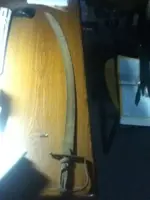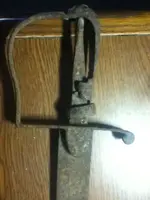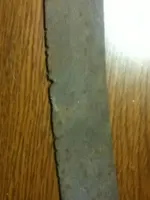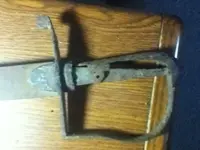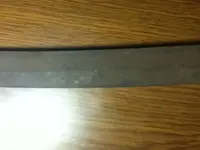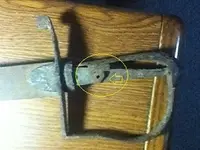Swords and sabers have often been one of the most often saved and collected mementos from earlier times, and accounts in a way for the large number surviving to this day. The particulars for how and why any object may have come to be lost or discarded at a certain point, is highly theoretical and subjective, and without details or context of other finds, a wild guessing game at best.
Over the years, swords and sabers have been pulled from attics and barns, only to be used as field knives to cut corn or cane, slice watermelons at picnics, be used by errant children playing in the forest, chopping and beating away at everything in sight, as well as a vast number of other uses. The "battle damage" can in fact be from any number of circumstances, and actually be the result of something far in time and distance from any notable military battle.
The degree of curvature on this particular blade, would I believe, designate this a saber, and therefore likely a cavalry or mounted troops weapon.
The style exhibited in the excavated example recovered near Kansas City shows a similarity to the British Pattern 1796 example posted by Charlie P. (NY). There are also many other European examples spanning nearly a century that display similar features of a single all steel hand guard, pinned tab extending onto the face of the grip, and sheath shield over the blade below the finger guard.
Napoleonic Swords and Sabers Collection: English Light Cavalry Sabre 1796 Pattern
German Cavalry Saber, - Cowan's Auctions
GERMAN CAVALRY SWORD BAKELITE GRIP SOLINGEN : Lot 31025
http://www.cowanauctions.com/auctions/item.aspx?ItemId=99225
This particular excavated example shows a unique shape in the steel tab on grip, in the fact that there is a notch-like shape, where this portion is not completely semi-circular as we may note in other examples. Each distinctive feature is a valid clue in determining proper identification.
CC Hunter



